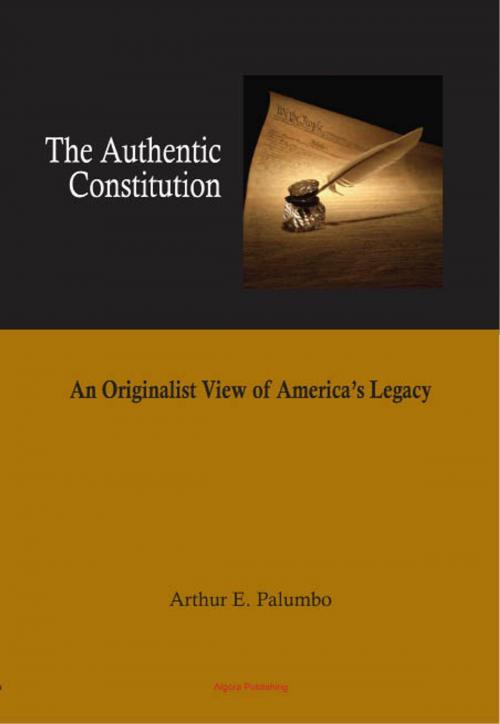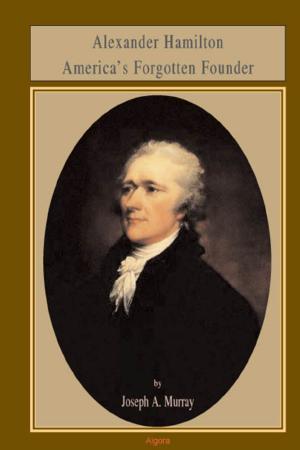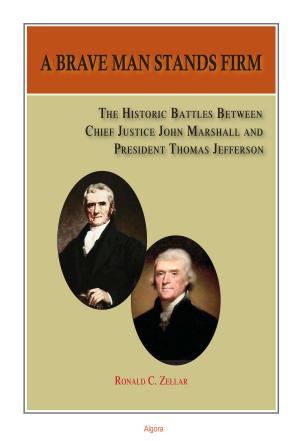The Authentic Constitution
An Originalist View of Americas Legacy
Nonfiction, Social & Cultural Studies, Political Science| Author: | Arthur E. Palumbo, Jr. | ISBN: | 9780875867076 |
| Publisher: | Algora Publishing | Publication: | December 15, 2009 |
| Imprint: | Algora Publishing | Language: | English |
| Author: | Arthur E. Palumbo, Jr. |
| ISBN: | 9780875867076 |
| Publisher: | Algora Publishing |
| Publication: | December 15, 2009 |
| Imprint: | Algora Publishing |
| Language: | English |
In 2008, Alan Keyes, a Republican presidential candidate in 1996 and 2000, described the relationship between the Declaration of Independence and the Constitution of the United States in the following way: "The doctrine of unalienable rights is to the Constitution what the laws of physics are to architecture or engineering. Those laws are not repeated in every plan or architect's drawing, but they are assumed and must be respected or the results will be defective and dangerous." It is clear that the founding principles of the Declaration are intimately connected with the Constitution and it would be unwise to ignore them or the bond that the two documents share.
The style of the book is scholarly, but not overly so. It is well documented and contains illustrations and tables. In several cases, documents are transcribed from the originals. The approach is generally as follows: First, an explanation of the original meaning of a particular section of the Constitution is provided. Second, the consequences of not following it are revealed. Third, a solution is offered to get the country back on course, always with a focus on returning to our founding principles and the Constitution.
The Authentic Constitution 1) Provides detailed evidence to support the contention that the Fourteenth, Fifteenth, Sixteenth, and Seventeenth Amendments were not properly ratified; 2) It unreservedly supports the view that the judiciary is not the sole arbiter of the Constitution and that only the parties to the case are ever bound by a court s decision; 3) It supports the view that the Bill of Rights is applicable only to the federal government and that each state has its own enumeration of rights that is applicable to each state; 4) It maintains that complete control over immigration was never constitutionally transferred from the states to the federal government and that this transfer could only have been accomplished properly by a constitutional amendment; and 5) It supports the view that although the right of the people to keep and bear Arms, ... [cannot] be infringed (Second Amendment), it equally supports the notion that each state must maintain an active militia, composed of the armed citizenry of the state (the well regulated Militia of the Second Amendment), as the Constitution requires.
In questions of power then let no more be heard of confidence in man, but bind him down from mischief by the chains of the Constitution. - - Thomas Jefferson
In 2008, Alan Keyes, a Republican presidential candidate in 1996 and 2000, described the relationship between the Declaration of Independence and the Constitution of the United States in the following way: "The doctrine of unalienable rights is to the Constitution what the laws of physics are to architecture or engineering. Those laws are not repeated in every plan or architect's drawing, but they are assumed and must be respected or the results will be defective and dangerous." It is clear that the founding principles of the Declaration are intimately connected with the Constitution and it would be unwise to ignore them or the bond that the two documents share.
The style of the book is scholarly, but not overly so. It is well documented and contains illustrations and tables. In several cases, documents are transcribed from the originals. The approach is generally as follows: First, an explanation of the original meaning of a particular section of the Constitution is provided. Second, the consequences of not following it are revealed. Third, a solution is offered to get the country back on course, always with a focus on returning to our founding principles and the Constitution.
The Authentic Constitution 1) Provides detailed evidence to support the contention that the Fourteenth, Fifteenth, Sixteenth, and Seventeenth Amendments were not properly ratified; 2) It unreservedly supports the view that the judiciary is not the sole arbiter of the Constitution and that only the parties to the case are ever bound by a court s decision; 3) It supports the view that the Bill of Rights is applicable only to the federal government and that each state has its own enumeration of rights that is applicable to each state; 4) It maintains that complete control over immigration was never constitutionally transferred from the states to the federal government and that this transfer could only have been accomplished properly by a constitutional amendment; and 5) It supports the view that although the right of the people to keep and bear Arms, ... [cannot] be infringed (Second Amendment), it equally supports the notion that each state must maintain an active militia, composed of the armed citizenry of the state (the well regulated Militia of the Second Amendment), as the Constitution requires.
In questions of power then let no more be heard of confidence in man, but bind him down from mischief by the chains of the Constitution. - - Thomas Jefferson















